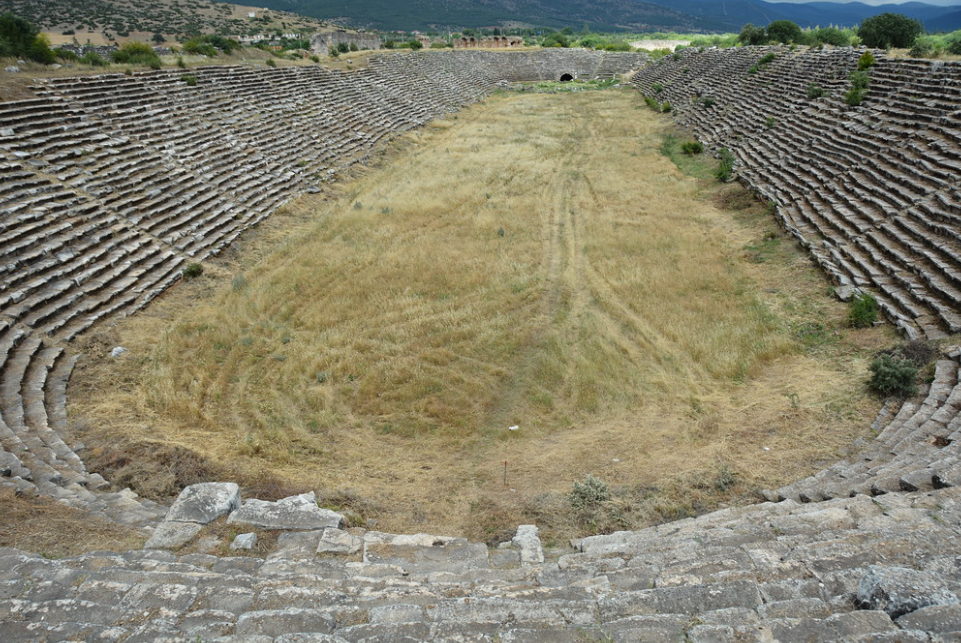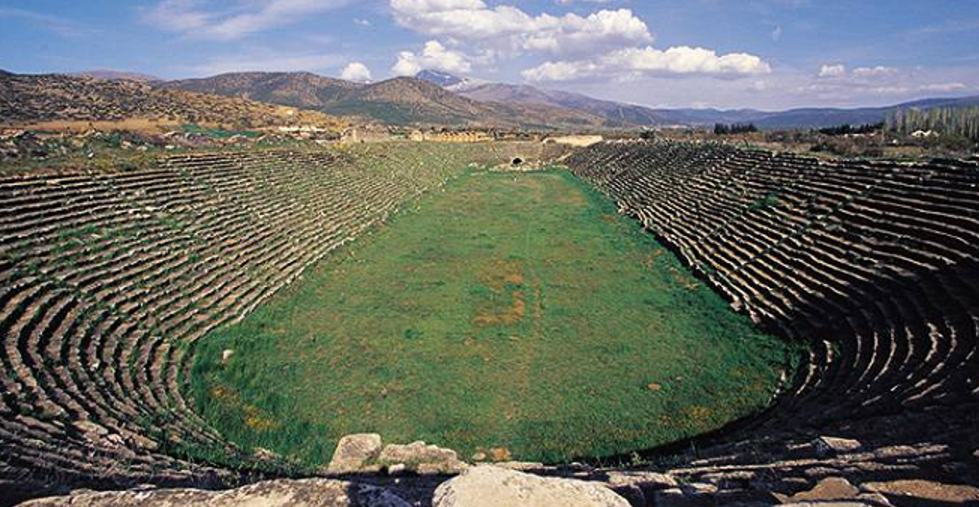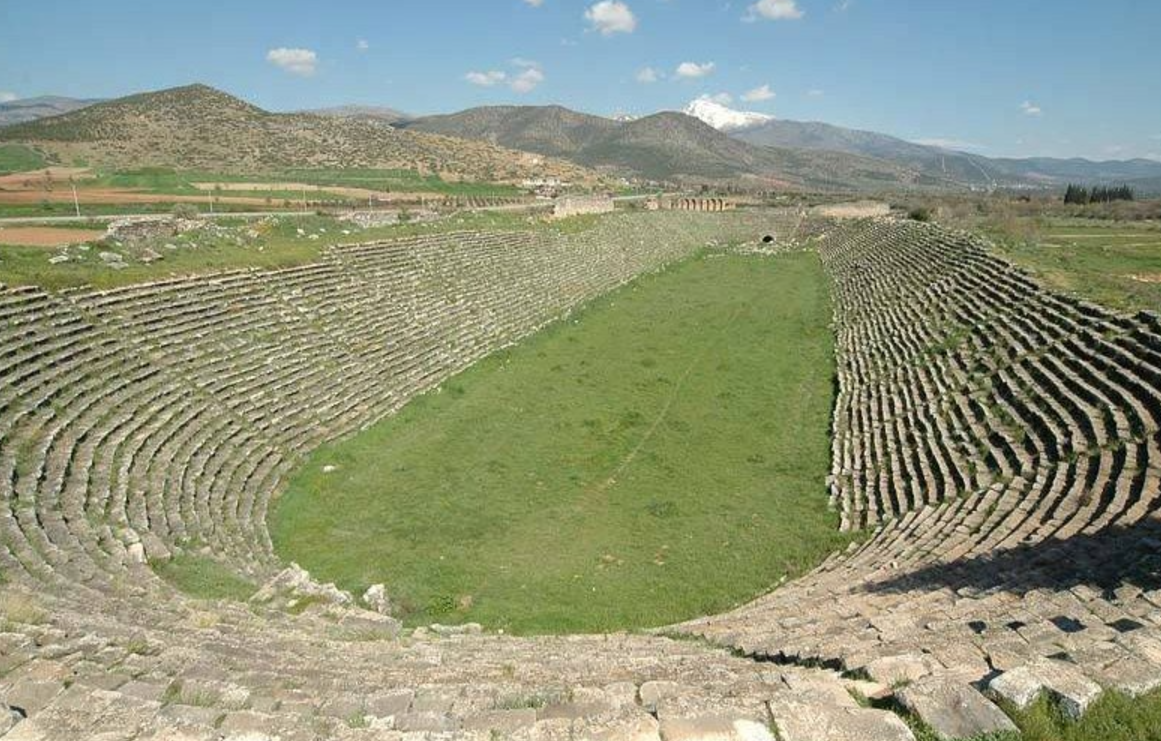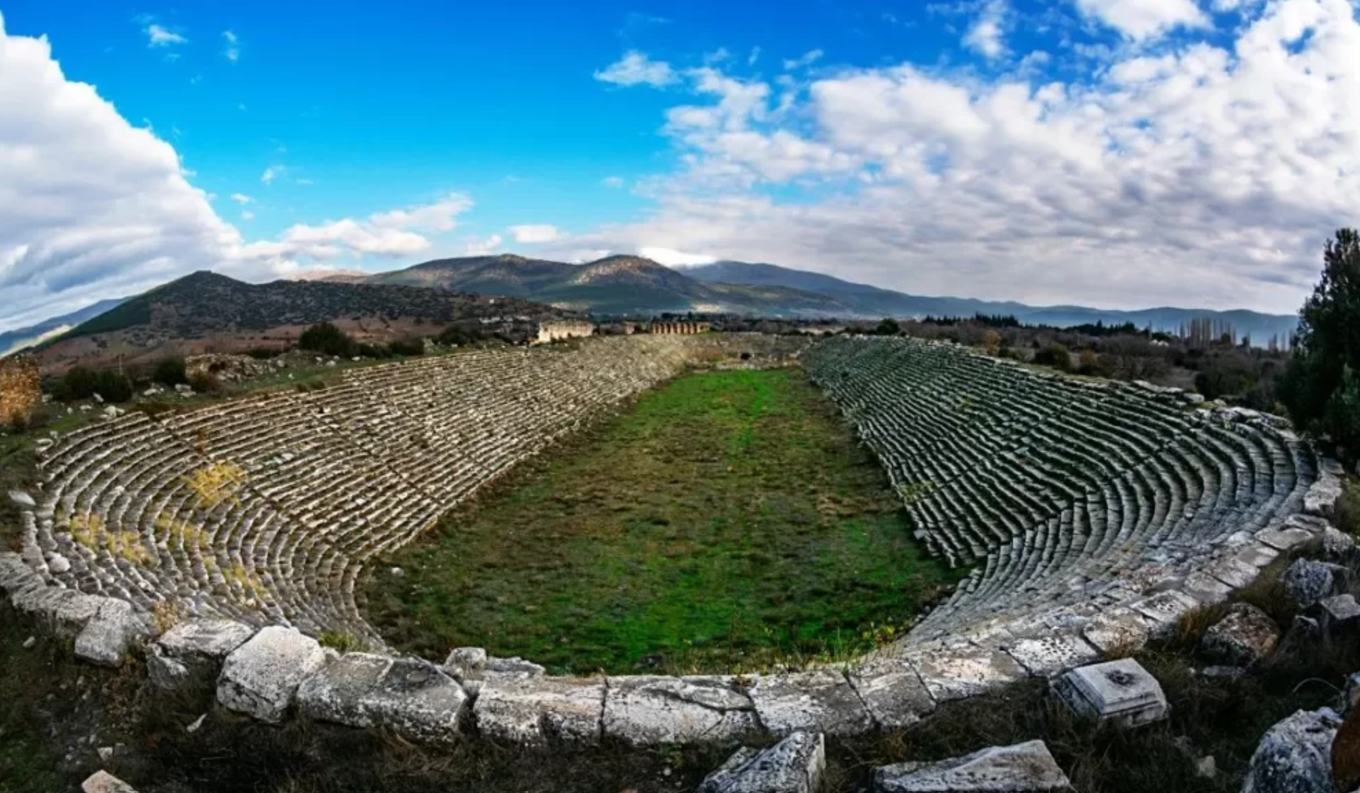Nestled in Aydın Province, Turkey, the Stadium of Aphrodisias stands as a magnificent relic of ancient times. Renowned for its exceptional preservation and grandeur, this stadium is a treasure trove of history, offering insights into the athletic and social life of antiquity. With its impressive scale and intricate design, it continues to captivate historians, archaeologists, and visitors from around the world. Follow archeology.dulichvn.net to explore this stadium located in Türkiye
The History of the Stadium of Aphrodisias
A Symbol of Roman Engineering
Constructed during the late 1st century BCE to the early 1st century CE, the Stadium of Aphrodisias is a testament to Roman architectural ingenuity. Aphrodisias, named after the goddess Aphrodite, was a thriving city in ancient Caria, known for its art, culture, and devotion to the goddess of love and beauty.

The stadium served as a central hub for athletic competitions, public gatherings, and ceremonial events. It was an integral part of the city’s social and cultural fabric, reflecting the Roman Empire’s emphasis on physical prowess and public entertainment.
The Role of the Stadium in Ancient Society
The stadium was not merely a venue for athletic contests; it was also a place where political events, gladiatorial games, and communal gatherings occurred. Events held here were an opportunity for citizens to come together, celebrate, and strengthen community bonds. This dual-purpose design underscores the multifaceted role such structures played in ancient cities.
See more: The Sacred Well of Predio Canopoli: A Bronze Age Relic in Sardinia
Architectural Marvels of the Stadium
Impressive Dimensions
The Stadium of Aphrodisias is one of the largest and best-preserved ancient stadiums in the world. Measuring 262 meters in length and 59 meters in width, it dwarfs many modern arenas. Its elliptical shape, characteristic of Greek stadiums with Roman influences, allowed for a variety of events, from athletic races to animal hunts.

Seating for Thousands
With a seating capacity of 30,000 spectators, the stadium accommodated a significant portion of Aphrodisias’s population and visitors from surrounding areas. The 22 rows of seats were meticulously crafted from marble, ensuring durability and a sense of grandeur. The strategic placement of the seats provided optimal views of the arena, ensuring an immersive experience for every spectator.
Unique Features
One of the stadium’s most remarkable features is its dual-purpose design. While primarily used for athletic events, its design also allowed for chariot races and gladiatorial combats. This versatility made it the centerpiece of public life in Aphrodisias.
Additionally, inscriptions and carvings found on the seats and walls provide valuable information about the spectators, sponsors, and events held here. These details offer a glimpse into the lives of those who once gathered in this magnificent space.
The Preservation and Legacy of the Stadium
A Remarkable State of Preservation
Unlike many ancient structures that have succumbed to the ravages of time, the Stadium of Aphrodisias remains remarkably intact. This is due to the high-quality marble used in its construction and the protective layers of sediment that covered it over centuries. Its exceptional preservation has earned it recognition as the most well-preserved stadium in the Mediterranean region.

Rediscovery and Restoration
The site of Aphrodisias, including the stadium, was rediscovered in the early 20th century. Archaeological excavations revealed the scale and sophistication of the stadium, prompting extensive studies and conservation efforts. Today, it is a UNESCO World Heritage Site, celebrated for its cultural and historical significance.
Modern-Day Significance
The stadium continues to draw scholars and tourists alike, offering a tangible connection to ancient history. It serves as a venue for cultural events and educational programs, bridging the gap between past and present. Walking through its grandstands and arena, visitors can imagine the vibrant energy that once filled the space.
See more: The World’s Oldest Wooden Wheel: A Glimpse Into Ancient Innovation
Visiting the Stadium of Aphrodisias Today
How to Get There
The Stadium of Aphrodisias is located near the modern town of Geyre in Aydın Province, Turkey. It is accessible by car or guided tours from major cities like İzmir or Denizli. The site is often part of broader archaeological tours of the region, which includes other landmarks like the Temple of Aphrodite and the Aphrodisias Museum.

What to Explore
Visitors to the stadium can marvel at its massive scale, explore the intricate carvings, and climb the marble seats for a panoramic view of the arena. The adjacent archaeological site of Aphrodisias offers additional attractions, including the theater, agora, and baths, providing a comprehensive glimpse into ancient urban life.
Tips for Visitors
- Time Your Visit: Morning or late afternoon visits are ideal for avoiding the midday heat and crowds.
- Wear Comfortable Shoes: The site requires walking on uneven terrain.
- Bring a Guide or Audio Tour: To fully appreciate the historical context, consider hiring a guide or using an audio tour app.
- Photography: Don’t forget your camera to capture the grandeur of the stadium and its surroundings.
Conclusion: A Timeless Monument of Human Achievement
The Stadium of Aphrodisias is more than just an ancient structure; it is a window into the past, showcasing the ingenuity, artistry, and communal spirit of a bygone era. Its grandeur, coupled with its remarkable preservation, makes it a must-visit destination for history enthusiasts and travelers alike.
Standing amidst the towering marble seats and vast arena, one can’t help but feel a profound connection to the people who once cheered, competed, and celebrated in this magnificent space. The Stadium of Aphrodisias remains a timeless monument to human achievement, an enduring legacy of the ancient world.

CÁC TIN KHÁC
Mary Walton: The Forgotten Inventor Who Helped Clean Up America’s Cities
Tomb of Queen Nefertari in the Valley of the Queens, Egypt
Discover the Hypostyle Hall of the Temple of Hathor at Dendera
Venus de Losange: Unveiling the Mystery of a 20,000-Year-Old Paleolithic Icon